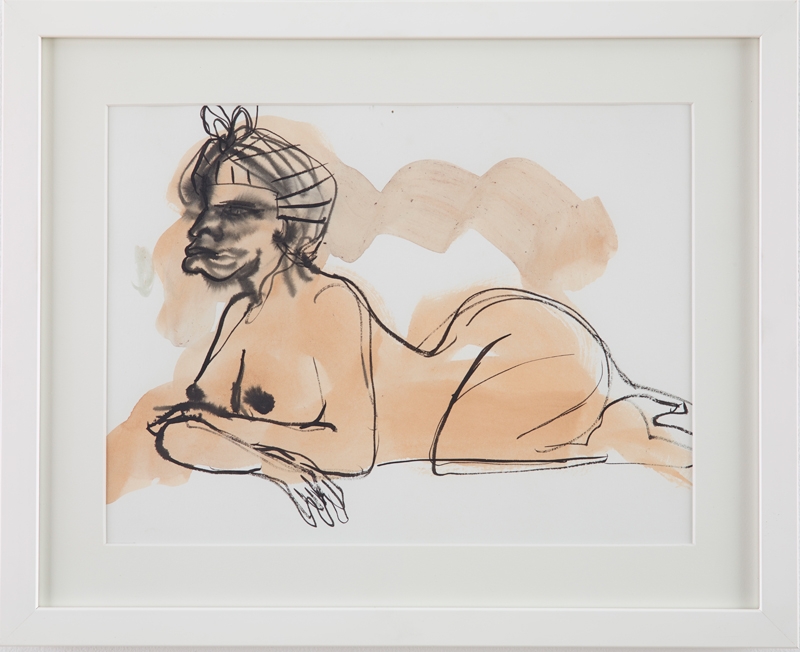The most-written-about New York exhibition of 2014 must surely have been Kara Walker’s monumental site-specific installation A Subtlety (to compress its extremely long full title), for which a gigantic, Africanised white-sugarcoated sphinx dominated the disused and decomposing Domino Sugar Factory in Brooklyn, accompanied, or perhaps attended to, by smaller, child-worker statues dripping with molasses. Not content to leave all subsequent comment on this to the bloggers, journalists and art writers, Walker’s recent exhibition of preparatory drawings, sculptural remnants and short films is, as the exhibition title has it, the artist’s Afterword.
It was less A Subtlety itself that provided the main topic of others’ critical comments, but more so the audience’s mode of mediated looking, self-imaging and online sharing. In reaction to the massive digital proliferation of selfies that were being taken in front of the sphinx, for the final hour of the final day of its exhibition last July, Walker asked six cameramen to film, as Afterword’s wall text puts it, viewers ‘in the act of looking – at the work, at themselves, at one another, and especially looking at their phones and cameras’. The outcome, a carefully edited but free-flowing 27-minute film, An Audience (2014), may not be the final word on the near viral digital dispersal of A Subtlety, but it represents a forceful attempt to reclaim some sense of the work’s enigmatic strangeness from its asinine online presence.
Beginning outside the factory site, a camera follows a black woman accompanied by her two young children amid throngs of viewers marching toward the factory space. A large warning notice guarding against touching the artwork prefigures the intense, almost compulsive technologised looking soon seen within.
Before the full carnival of audience imaging begins to unfold, the first few sequences demonstrate, almost didactically, a clear contrast between unguarded and ambiguous emotional reactions to the work – awe, confusion, discomfort – and the cool affectless activity of the photographers. It is as if the latter functions as a defence against the former, as if the sickly sweet horror of Walker’s installation generates a need for such psychical protection.
Walker’s choice of watercolour for the preparatory sketches, a popular colonial-era medium used by tourists seeking to capture picturesque scenes, has both historical significance and contemporary parallels. The widely prevalent vernacular imaging of the past is connected directly, in at least one sketch, Progeny (2014), to the contemporary scenes of selfimaging seen in An Audience. This blood-red watercolour shows a decapitated sphinx with a diminutive figure resembling one of the attendant sculptures, but now shown holding up a camera phone.
If An Audience conjures up similar parallels between past and present, the imaginative range of viewer reactions – from vulnerability to bold self-assertion to cautious curiosity – is perhaps stranger even than the fevered scenes of violence, reverence and horror seen in the watercolour sketches. I wonder if Walker might still be surprised at the footage from that final hot July day.
This article was first published in the March 2015 issue.
